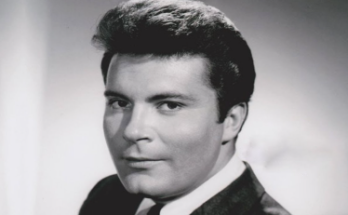NFL Heads to Ireland: Vikings and Steelers Set for Historic 2025 Dublin Game
The National Football League has spent the past two decades expanding its global footprint, bringing the uniquely American sport to audiences in London, Mexico City, Germany, and beyond. In 2025, that mission takes another historic step as the league heads to Ireland for the very first time. The announcement of the NFL Dublin Game, featuring the Minnesota Vikings and the Pittsburgh Steelers, has sparked excitement across two continents, blending the tradition of Irish culture with the modern spectacle of professional football.
A Long-Awaited Moment
For years, rumors swirled about Ireland’s potential to host an NFL game. Dublin, with its passionate sports culture and world-renowned hospitality, seemed like a natural fit. Aviva Stadium, home to Ireland’s rugby and soccer teams, has long been considered a world-class venue. The NFL has held preseason exhibitions in Ireland before, but never a regular-season contest. This makes the 2025 Dublin Game not only historic but symbolic of the league’s confidence in Ireland as a true football destination.
The choice of teams adds even more intrigue. The Minnesota Vikings bring with them a strong international fan base, especially in Europe, where their branding, heritage, and recent playoff runs have elevated their profile. On the other side, the Pittsburgh Steelers are one of the NFL’s most storied franchises, with six Super Bowl titles and a tradition built on toughness, defense, and loyal fans known as the “Terrible Towel” wave. Together, the Vikings and Steelers represent both history and modern competitiveness.
The Global Push of the NFL
The NFL’s international series is not a novelty experiment anymore—it’s a central pillar of the league’s long-term growth strategy. London has become a second home, with multiple games played there each season. Germany’s reception to games in Munich and Frankfurt has been nothing short of electric, selling out within minutes and creating some of the loudest atmospheres seen in recent years. Mexico City has also proven to be a thriving market, combining passion for sports with a deep appreciation for NFL culture.
Adding Ireland into this rotation signals that the league is committed to diversifying its international presence. Dublin offers a blend of accessibility for European fans, a strong connection to U.S. culture through shared history, and a local population eager to embrace the NFL spectacle. Ireland also brings its own flavor of fandom—cheerful, spirited, and steeped in tradition. The sight of shamrocks, bagpipes, and Viking horns blending with Steelers’ Terrible Towels will make for a visual spectacle unlike anything seen before in the NFL.
Cultural Connection
The NFL has always done well when it can connect to local culture. In Germany, the league embraced chants, beer halls, and soccer-like atmospheres. In Mexico, it celebrated mariachi bands and local cuisine. Dublin provides its own opportunities. Irish fans are passionate sports enthusiasts, especially when it comes to rugby, soccer, and Gaelic football. These sports, while different from American football, share the themes of toughness, teamwork, and intensity. That overlap makes the NFL an easy fit.
Expect the NFL to fully embrace Irish culture throughout the week leading up to the game. Themed events across Dublin, from fan zones in Temple Bar to Irish music collaborations, will likely dominate the festivities. The presence of iconic Irish landscapes and symbols—such as shamrocks and Celtic knots—in promotional material shows the NFL’s intent to weave Ireland into the identity of the game.
The Matchup on the Field
Beyond the cultural milestone, the Vikings-Steelers showdown carries football significance. The Vikings, powered by their young quarterback and star receiver duo, bring one of the league’s most exciting offenses. Their ability to stretch defenses vertically and keep defenses honest on the ground makes them a tough matchup for any opponent. Wide receiver Justin Jefferson, one of the league’s brightest stars, will be a must-watch in Dublin, dazzling fans with his highlight-reel catches and signature celebrations.
The Steelers, meanwhile, continue to build on their reputation as one of the league’s grittiest franchises. Known for their suffocating defense, led by T.J. Watt, the Steelers will look to impose their will physically. On offense, their young quarterback has shown flashes of potential, and a solid ground game provides balance. The matchup between the Vikings’ offensive firepower and the Steelers’ defensive dominance promises to be a thrilling chess match for fans.
A Showcase for Ireland
For Dublin, hosting the game is about more than just the NFL. It is a chance to showcase the city on a global stage. Broadcasts will beam images of Dublin’s skyline, historic streets, and cultural landmarks to millions of viewers worldwide. Tourism officials expect a surge in visitors, with fans traveling not just from the United States but from across Europe. Hotels, pubs, and local businesses stand to benefit significantly from the influx of football fans.
Ireland’s government and local organizers have emphasized the broader economic and cultural benefits of hosting such an event. Beyond ticket sales, the NFL’s presence brings media coverage, sponsorship opportunities, and long-term interest in the country as a destination for global sporting events. For Dublin, the NFL game is both a celebration and an investment in its international reputation.
Fans Flocking from Afar
One of the most remarkable aspects of the NFL’s international games is the way fans rally to attend. U.S.-based supporters of the Vikings and Steelers are already making plans to cross the Atlantic, turning the Dublin Game into a travel adventure. At the same time, European fans—many of whom may never have the chance to see an NFL game in the United States—are eager to seize the opportunity.
Irish fans, whether long-time NFL followers or newcomers curious about the sport, will likely add their own flair to the crowd. The blending of accents, chants, and traditions will create a uniquely global atmosphere that reflects the NFL’s mission of uniting fans worldwide.
The Broadcast Experience
The game will kick off at 9:30 AM ET, aligning with the NFL’s strategy for international games to provide a standalone broadcast window in the U.S. This timing ensures maximum visibility while respecting local scheduling in Dublin. Fans in America can catch the action on NFL Network, with additional streaming on NFL+, making it widely accessible.
The broadcast itself will likely feature nods to Irish culture, with pre-game coverage showcasing local landmarks, music, and fan events. Just as the Munich game introduced millions of viewers to German stadium traditions, the Dublin Game will offer a taste of Ireland alongside the football action.
Looking Ahead
The NFL Dublin Game is not just a one-off; it’s a signal of what’s to come. If successful—and all signs point to overwhelming demand—the league may consider making Ireland a regular stop in its international rotation. Expansion into other European markets could also follow, with Spain and France rumored as future candidates.
For now, though, all eyes are on Dublin. The Vikings and Steelers will write the first chapter of NFL history in Ireland, giving fans a spectacle that blends tradition, culture, and competition.
A Global Game with Local Heart
The NFL has always thrived on moments that feel bigger than football—moments that resonate with culture, identity, and history. The 2025 Dublin Game is one of those moments. It’s not just about touchdowns and tackles. It’s about the roar of Irish fans joining the chorus of the NFL family, about Pittsburgh and Minnesota supporters making memories in a foreign land, and about the league planting its flag in a country known for its passion and pride.
When the Vikings and Steelers take the field in Dublin, they’ll be doing more than playing a regular-season game. They’ll be making history, uniting fans across oceans, and proving once again that the NFL’s future is global.


